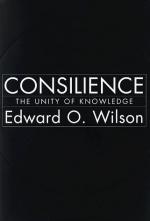
|
| Name: _________________________ | Period: ___________________ |
This test consists of 15 multiple choice questions and 5 short answer questions.
Multiple Choice Questions
1. What does Edmund Wilson credit human nature with altering?
(a) Epigenetic rules.
(b) The environment.
(c) Technological influences.
(d) Language.
2. What did all Enlightenment thinkers have in common, according to Wilson?
(a) A sense of historical purpose.
(b) Literary methods.
(c) Scientific methods.
(d) Faith in God.
3. How does Transcendentalism justify war, in Edmund Wilson's account?
(a) Each side poses as protecting an individual's rights.
(b) Each side describes their cause as sacred.
(c) Each side relies on unifying logic.
(d) Each side refers to nature for their authority to fight.
4. How does postmodern influence portray existence?
(a) As individual.
(b) As chaotic.
(c) As communal.
(d) As interdependent.
5. Where does postmodernism fail to accord with science, in Edmund Wilson's account?
(a) In refusing to accept statistical modeling of individual behavior.
(b) In rooting creativity in social behavior.
(c) In describing the brain as chaotic.
(d) In describing the arts as strictly cultural.
6. Where do science and the arts both originate, according to Wilson?
(a) In language.
(b) In the genes.
(c) In religion.
(d) In the imagination.
7. Who does Wilson offer as evidence of thinkers affected by the concept of natural rights?
(a) Jean-Jacques Rousseau.
(b) Thomas Jefferson.
(c) Benjamin Franklin.
(d) Robespierre.
8. What were ethics constructed around, according to Wilson?
(a) The notion that justice is independent.
(b) The notion that the gods observe human actions.
(c) The notion that human beings can be perfected.
(d) The notion that human acts have consequences.
9. What is the problem with sociology, in Edmund Wilson's estimation?
(a) It is grounded in badly-understood genetic science.
(b) It avoids analysis.
(c) It is founded in statistics.
(d) It relies on untrustworthy models for its measurements.
10. Where does Edmund Wilson say consilience is beneficial?
(a) In history and technology.
(b) In biology and ethics.
(c) In all areas of learning.
(d) In humanities and natural sciences.
11. What cannot be expressed by brain imaging, in Edmund Wilson's account?
(a) Traits responsible for art.
(b) The locus of artistic appreciation.
(c) The genetic predisposition toward artistic work.
(d) Reactions to art.
12. What will the combination of the arts and sciences ultimately create?
(a) Transcendence.
(b) The revelation of the source of creativity.
(c) The evolution of the brain.
(d) The genetic source of imagination.
13. What is gene-culture evolution?
(a) Enrichment of the environment within which genes are altered.
(b) Evolution of the genes that change a species' culture.
(c) Changes in human culture that are driven by genetic changes.
(d) Development of individuals and races within evolving cultures.
14. What do cultures use from the mind, in Wilson's account?
(a) Narratives.
(b) Humanities.
(c) Myths.
(d) Science.
15. How many billion people can the earth sustain, theoretically?
(a) 10.
(b) 12.
(c) 22.
(d) 16.
Short Answer Questions
1. What statistic shows the strength of the transcendental view, in Edmund Wilson's account?
2. What does Wilson say about the complexity of the social sciences?
3. What does natural selection provide for a species?
4. What evolution creates culture?
5. What are epigenetic rules?
|
This section contains 537 words (approx. 2 pages at 300 words per page) |

|




